
Replicating John Hancock’s Clothing
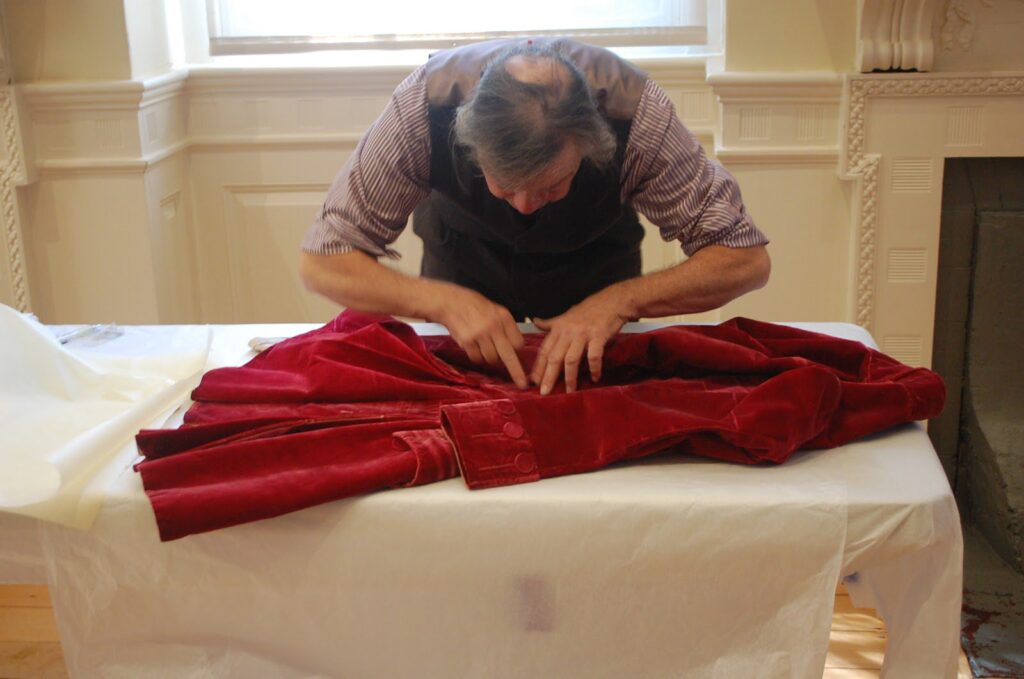
This post was originally published on the Bostonian Society’s On King Street blog in 2017, written by Sira Dooley Fairchild, former Collections Manager
In order to preserve John Hancock’s clothing, we are currently in the process of having replicas made. These replicas will allow us to return the originals to dark storage and therefore preserve them for future generations. Earlier this week, Master Tailor and Clothing Historian Henry Cooke was in the galleries, studying the original coat and waistcoat in order to begin the process of faithfully replicating them.
He began by thoroughly examining the coat.

After pinning tracing paper to the surface of the garment with very thin “insect pins”, he traced all of the seams.

Each part of the garment got its own piece of tracing paper.

Henry also matched the exact color of the fabric.

The sleeves were very tricky.

The same process was repeated for the waistcoat.

Throughout the process, Henry answered questions from visitors and staff about the garments and how they were originally made, as well as questions about what his process would be when he constructs the reproductions.
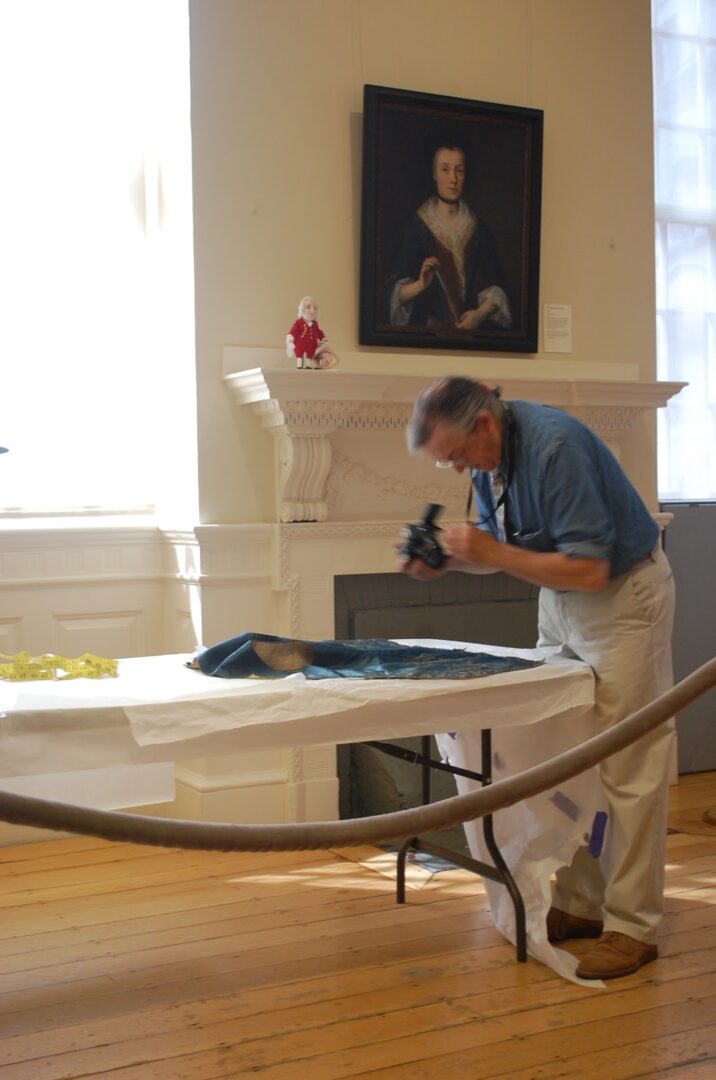
He also took many photos of the exquisite details to aid in the reproduction process.


Staff and visitors were very excited to see a side of these garments that is very rarely seen.
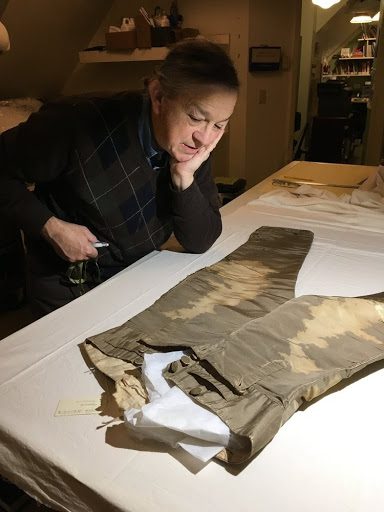
Last week, Master Tailor and Costume Historian Henry Cooke returned to the Old State House to take a pattern from a pair of buff-colored silk breeches which once belonged to John Hancock. Having a replica of this very fragile garment will give us the the potential to interpret them in the museum galleries (something that is not currently possible) and provides a study object which researchers and staff can handle and learn from. This is part of an on-going project by the museum to preserve these important garments for future generations.
The breeches are in poor condition and require very careful handling, so Henry was joined by expert textile conservator Johanna Tower who assisted him in moving the breeches and taking measurements without causing additional harm to the fragile silk.
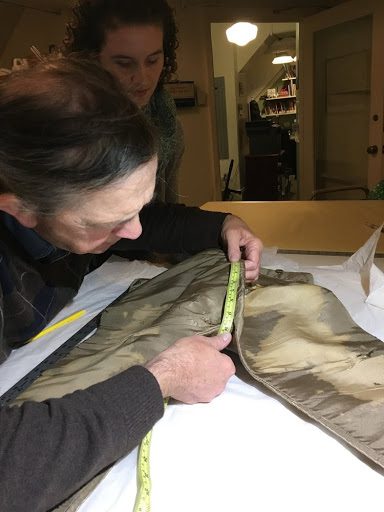
We are not entirely sure what caused the damage to these breeches, but our educated guess is that acidic liquid dripped on them while they were folded, causing damage and discoloration to the upper part of both legs. Even rain water can become highly acidic if it passes through or over wood or tanned leather prior to contact with a sensitive textile. Conservation work was attempted in the early 1990’s but they were unable to halt the disintegration of the silk.
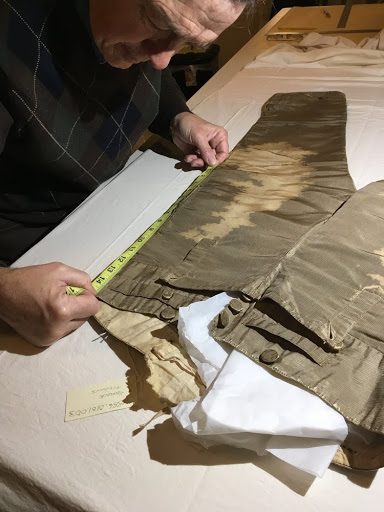
Mindful of their fragile state, Henry took his pattern from the breeches not by laying tracing paper over them, as he does with most garments, but by taking measurements at regular intervals and making a full scale drawing on a separate piece of tracing paper.
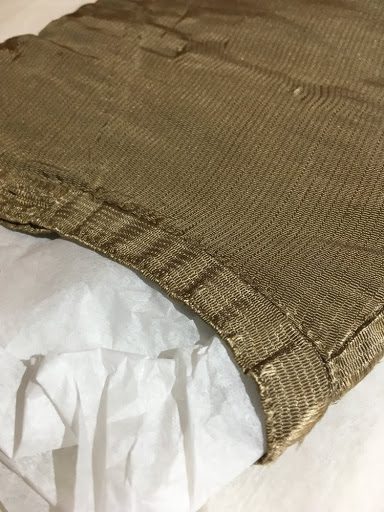
The silk cloth which these breeches were made of is very unusual – it is vertically ribbed, but each rib is made up of hundreds of tiny horizontal ribs. Neither Henry nor Johanna had seen anything like it before and sourcing matching silk for the replica may prove difficult.
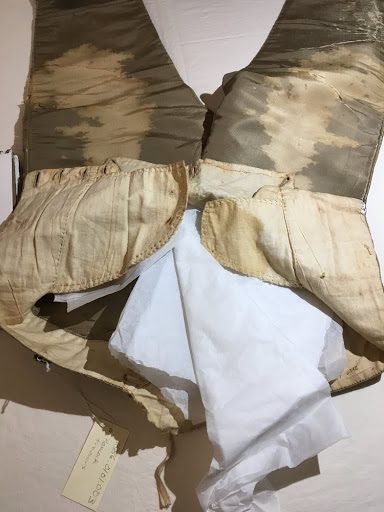
These breeches include two pockets – a small on on the right, designed to hold John Hancock’s watch, and a larger one on the left, which fastens with a small button.
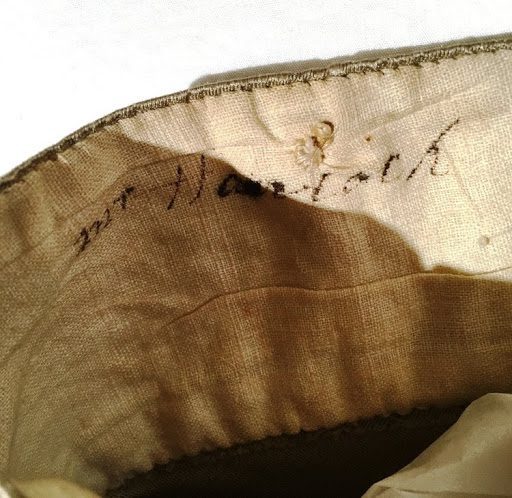
They also have the words “Mr Hancock” written inside of the waistband. Whether this was written during his lifetime or after is unknown.
Because of their condition, we try to handle these breeches as little as possible. This process also gave museum staff a rare opportunity to examine the details of their construction, such as the inside of the cuffs and underneath the fall (flap).
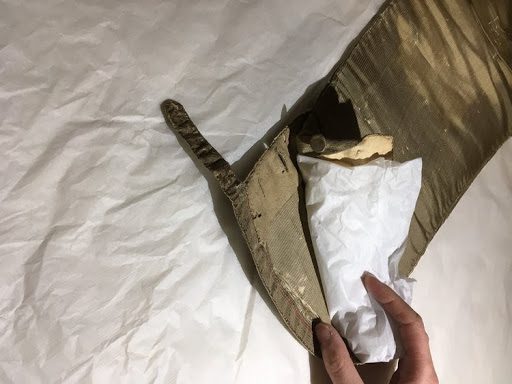
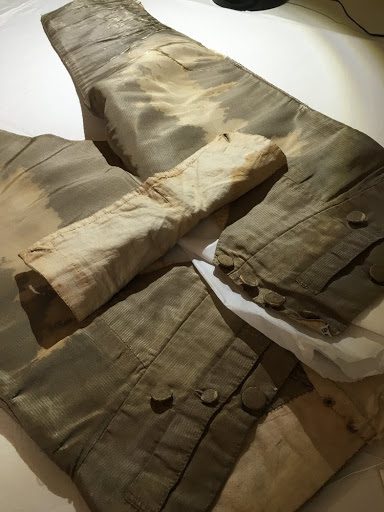
In addition to taking many photographs of the details of the breeches, Henry and Johanna color-matched the fabric. There wasn’t an exact match, but there were able to narrow it down to two very close shades.
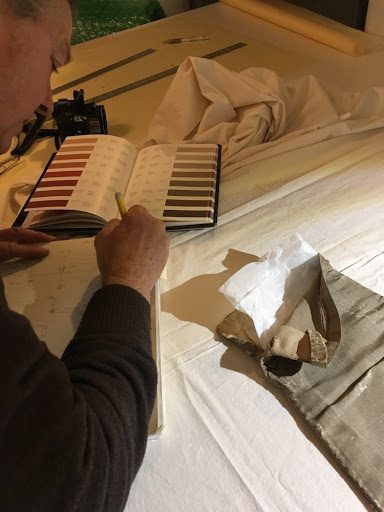
Huge thanks to Henry and Johanna for all of their careful, thoughtful work.

